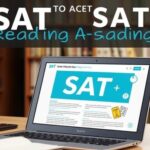In today’s diverse educational setup, students end up with a deluge of several resources: syllabi, Power Point presentations, PDFs, and textbooks. These materials offer the framework which the learning process is based upon, offering resources, structure and instructions which are needed to achieve success within lessons.
Still, a large variety of students tend to neglect the necessity of absorbing all the possible detail relating to these documents, the most fundamental of which is the syllabus. The purposes of this article will be to delve into the benefits of fully comprehending your syllabus and importance of reading your syllabus powerpoint presentation pdf assigned during a course, in order to show how they can lead to a more structured, informative, and positive academic experience.
1. Understanding the Syllabus: Your Roadmap to Success
This paper will argue that the syllabus can be understood as the contract between the instructor and the student. It is the learning agreement that captures the course goals and objectives, the instructor’s expectations, major activities to be completed in the course, grading policies and important calendar dates among others. However, there is a common problem, students often read it very hastily or not read it at all expecting the main information will be given during the lectures. But disregarding syllabi may make students lose, innovative chances and/or cause misunderstandings.
a. Setting Expectations
Before you embark on the specific learning process, the syllabus creates the foundation of what the instructor was in a position to teach you and which of these you have to expect to acquire from the specific course. If read carefully, it allows one to better understand its learning objectives and hence, the important issues relating to the course subject matter. If the course aims at enhancing the problem-solving skills, or critical thinking skills for instance, it is helpful to be aware of this knowledge beforehand in as much as it affects your study schedule and tests.
b. Planning Your Semester
An example of notes found in the syllabus include; A schedule for the course that includes the topics that will be covered in the course per week and the due dates of assignments, projects, and tests. The virtue of considering such dates is that they help one to have a proper schedule on what is expected when, thus no last-minute rush. For example, you may need to submit a major project in a week, and by having this information you can start tackling the project in an incremental, as opposed to cramming problem.
c. Need to expound the grading criteria
Each course has its kind of policy with regard to grading system. While some learners for instance, put much more value on their exam, others may consider class participation, projects or even essays more. This is in accordance with your syllabus that indicates how each of the section make up particular percentage of your overall grade. Understanding this allows you to focus your energies in areas where you will be most effective, in other words, where results matter most.
d. Avoiding Miscommunication
Students sometimes find themselves confused about expectations, deadlines, or assignments, leading to unnecessary stress or poor performance. The syllabus is often the first place to look for clarification. It can prevent you from asking redundant questions and foster a sense of independence in your academic journey. In case you need to discuss something with your instructor, referring to the syllabus first shows that you are prepared and responsible.
2. PowerPoint Presentations: A Visual Learning Tool
PowerPoint presentations are widely used in classrooms and online courses as a method of organizing and presenting information visually. When used effectively, they can enhance understanding and retention. Unfortunately, students often fail to maximize their potential, seeing them only as supplementary materials rather than essential learning tools.
a. Reinforcing Key Concepts
Instructors typically use PowerPoint presentations to highlight the most critical points of a lecture or chapter. These presentations distill information into bite-sized chunks, making it easier for students to focus on key takeaways. Reading through the slides before and after class allows you to reinforce these concepts and retain them longer. By comparing lecture notes with the slides, you can identify areas that may need further clarification or study.
b. Enhancing Engagement During Lectures
One of the key advantages of reading PowerPoint presentations before attending a class is that it primes you for the lecture. You become familiar with the main topics and terminology, making it easier to follow along and engage with the content. Active engagement—such as asking questions or participating in discussions—improves comprehension and makes the learning process more interactive.
c. Aiding Note-Taking
Good note-taking is a critical skill for academic success. PowerPoint presentations often serve as an excellent template for note-taking because they organize information in a logical, sequential manner. Instead of trying to write down every word the instructor says, you can focus on elaborating on the bullet points provided in the slides. This not only saves time but also allows you to engage more actively in class discussions.
d. Providing a Study Aid
In preparation for exams, PowerPoint presentations can act as a condensed version of your study material. Since they typically contain only the most essential information, reviewing them can provide a quick and efficient way to refresh your memory before an assessment. However, it’s essential not to rely solely on them. They should be used in conjunction with other course materials, such as textbooks and notes, to provide a comprehensive understanding of the subject.
3. PDFs: A Flexible and Detailed Resource
Instructors often supplement lectures and textbooks with PDF readings, which may include journal articles, case studies, e-books, or additional reference materials. Unlike PowerPoint slides, which are designed to simplify information, PDFs often provide more detailed, in-depth content.
a. Access to Primary and Secondary Sources
PDF readings are frequently used to provide students with primary or secondary sources that are essential for understanding a particular topic. These documents might include original research, historical texts, or technical papers that delve deeper into the subject matter than a textbook can. Reading these sources gives you a broader perspective and a deeper understanding of the course material, enhancing your critical thinking skills.
b. Enhancing Research Skills
Many PDF resources are scholarly articles that require a more advanced level of reading and comprehension. Learning how to navigate these types of documents improves your research skills, which are essential for academic writing and projects. By identifying key arguments, methodologies, and conclusions within these readings, you become better equipped to analyze and synthesize information in your own work.
c. Cross-Referencing with Other Materials
PDF readings often complement lectures and textbooks. Cross-referencing between these materials allows you to see how different sources approach the same topic, offering multiple perspectives. This not only deepens your understanding but also helps you develop a more nuanced view of the subject.
d. Developing Critical Reading Skills
Unlike PowerPoint presentations, which are often straightforward, PDFs tend to be more text-heavy and complex. They require a higher level of engagement, encouraging you to think critically about the content. This active reading process improves your ability to evaluate arguments, assess evidence, and form your own conclusions—skills that are invaluable not only in academia but also in your professional life.
4. Developing Effective Study Habits
It is very effective to read your syllabus, PowerPoint presentations, and PDFs to build a powerful study habit. This is how they can change your academic life once you include them in your everyday plans.
a. Structured Study Sessions
If you start a study session by going through the syllabus, then you have an idea of what you need to accomplish. For instance, if you know that there is an upcoming assignment due, you can schedule your reading of the appropriate PDFs and the set PowerPoint presentations in relation to that due-date. When preparing a timetable that covers all the activities and course material that are set for the semester, you will not have to cram because your schedule will allow you enough time to master all the information.
b. Active Reading and Engagement
Having students read PowerPoints and PDFs necessitates practicing active reading or, at least, taking notes, asking questions to themselves and cross-referencing. This way of learning lowers the level of passive absorption, and you likely to retain more of what you have actually read. Research also indicates that active learning is more effective than passive learning since the students will have gained more knowledge to enable them achieve the desired results for the long term.
c. Information Fusion
All these resources – syllabus, Power Point presentations, PDFs and other important documents create an optimal view on the course. Each resource serves a unique purpose: In terms of task design, syllabi are given to give form to an activity, PowerPoints are summary notes of a discussion or series of lectures, while PDFs are rather inclusive of lots of details. When using these sorts of materials, it becomes easier to relate the elements of the subject with each other and instances in real life.
5. Preparing for Real-World Applications
The main aim of learning is to enable students to face real life situations where they are part and parcel of them. Students work with all types of materials offered in a course, the syllabus, PowerPoints, and PDFs and that stimulate the connection between the theoretical and practical knowledge.
a. Professionalism and responsibility are expected in all employees because it becomes the right thing to do in carrying out their functions.
Professions and responsibilities can be learned when through the process of reading and understanding the syllabus assigned by the lecturer. While the syllabus defines the expectation of a course, in the work place, contracts and agreements define job expectations. Thus, responsibility that you exercise in an academic context – be it submission of articles within deadlines or compliance with guidelines – trains you for corporation responsibility.
b. Think Critically and Solve Problems
The use of PowerPoint presentations and PDFs for lessons usually make the students to embrace analytical thinking and actual problem solving. Whether you are studying case and doing a case analysis or when evaluating the methodologies for the research, all these activities reflect what you are going to face in your professional practice. Appreciation of information and decision making skills is highly valued in our today’s world employment market.
c. Locally embedded Learning and Adaptation
The issue is that during the present days, when the pace at which people are changing is incredibly high, the focus on the necessity of learning constantly is essential. Through exposure to instructional resources which include PDFs with new knowledge and ideas it becomes a habit to always update oneself. This learning culture is always key for the holder of any aspiring profession more so in the dynamic fields of practice like technology, healthcare and business among others.
Conclusion
Incoming information in the form of syllabi, power point presentations and PDFs is not mere reading, but a measure towards class performance. They set out the course outline, review and explain concepts, offer additional information and assist the development of important skills such as critical thinking and time management.
If you immerse yourself into these materials, then it will be beneficial to your learning, helpful to your performance and relevant to the real world. That is, these documents are not supplementary, but essential tools, which, if applied properly, contribute to a rational, effective educational process.









